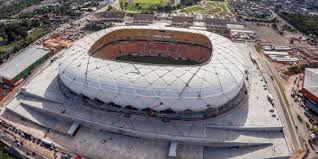By Ricardo Setyon
April 15 – The writing was on wall from the moment the decision was taken to build. The Arena Amazonia – a beautiful and giant stadium, in the heart of Manaus, the capital city of the most important forest on Earth, and constructed for the greatest show on Earth, the FIFA World Cup – has become a monument to Brazilian football’s financial folly. A legacy nightmare.
Club football in Brazil does not have an equal national spread and the Amazon region is not a hotbed of the game. There has not been a single team in the top or second division in Brazil for a number of years while the local Amazone State League struggles with few clubs, and most of them are outside of Manaus – and most of them are cash-strapped.
Nacional is a good example. One of the traditional and most important Amazonian clubs, playing in the local state league, the Brazil Cup and the so-called Gren Cup (for clubs connected regionally to the Amazonian Basin and environs), Nacional had to drop the price of match tickets the Arena, to a maximum of £10 to encourage attendance.
Now in a position where the club cannot even cover the costs of playing in the Arena Amazonia, Nacional is switching venue.
With the loss of the Arena’s main club tenant, a search is on to find ways to cover the £180,000 monthly cost to taxpayers in a stadium that lies empty more than 65% of the time.
Close to £200 million was spent to build the Arena, in a city that still fights serious poverty, where public hospitals are in dramatic need of supplies, and sewage is still far from being 100% treated.
With loan repayments being missed and the interest on those loans currently at £18 million, the hunt is on to to find a way to transfer the management and maintance of the Arena to a private entity.
One bright spot for the Arena is that it is one of the stadia to host matches for the 2016 Olympic Games. This effectively means that it will have to remain government funded until after the Olympics.
Since the four matches of the World Cup, the Arena has hosted less than one match a month (statistically 0.7 of a match per month). In 2015 there have been just five matches played there.
As if to add insult to injury (and adding to the taxpayer’s bill) is that the stadium grass, costing £65,000 to install to meet FIFA standards, is having to be replaced at a cost of £50,000.
The Arena has become a political football locally, even being used for a public protest by striking teachers demanding higher salaries, the teachers claiming there was money to maintain the stadium but not to pay them.
The jury is out on the future for the Arena, but one thing is certain, it will require public money to keep it open through the Olympics and it is unlikely to see increased usage before then. Post Olympics, persuading a private entity to take on the commerical challenge is major challenge that at this point looks unlikely to be achieved.
Contact the writer of this story at moc.l1744971392labto1744971392ofdlr1744971392owedi1744971392sni@n1744971392oytes1744971392.odra1744971392cir1744971392

